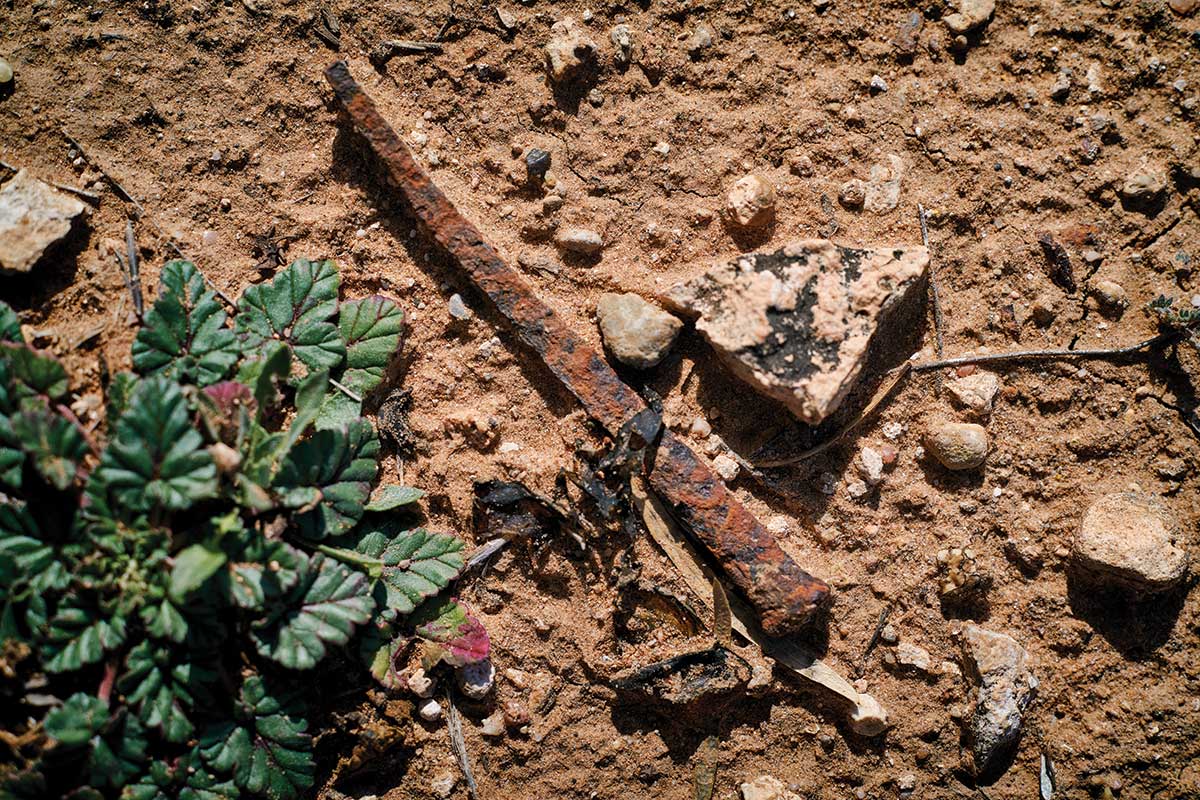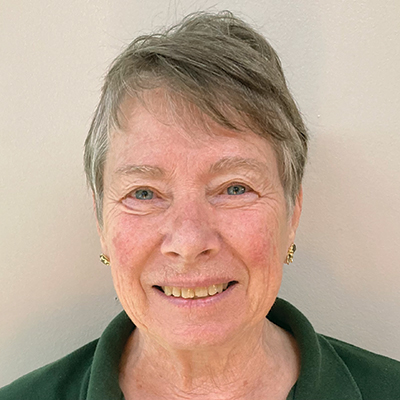In its heyday, more than 150 years ago, Fort Chadbourne housed 450 soldiers. Today, it sits by its lonesome on a desolate rise in West Texas. Six restored limestone buildings and others, crumbling but stabilized, surround the parade grounds.
The inhabitants are long gone, but traces of them remain.
Garland Richards’ family has lived on ranchland here, north of Bronte, in rural Coke County, for eight generations. The site includes a former stagecoach stop on the Butterfield Overland Mail Co. route and the remains of the frontier fort, used by the U.S. Army 1852–67.
Richards, a member of Taylor Electric Cooperative, knew history was being lost to time and the elements.
“When I was a kid, there was a waist-high adobe wall here,” he says. “In my lifetime, it has melted to ground level.”
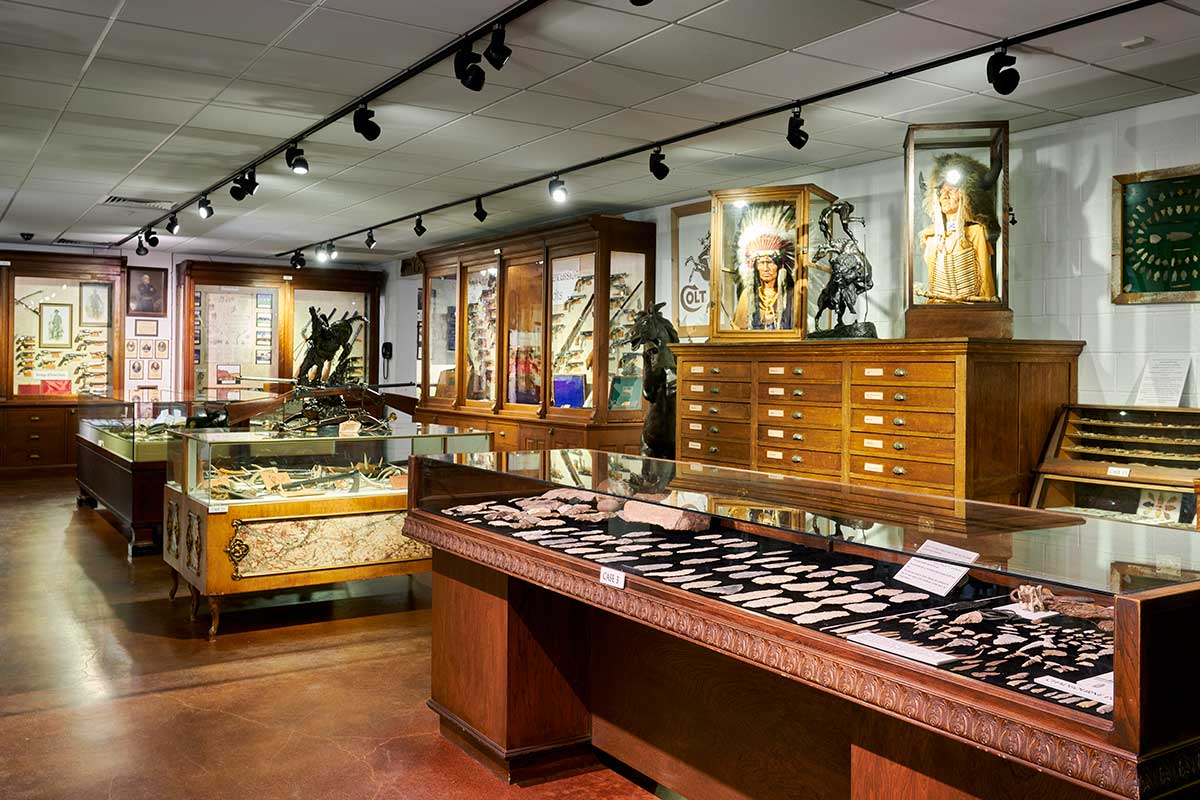
Hundreds of Fort Chadbourne artifacts, including firearms, are on display.
Dave Shafer
The Richardses and another West Texas ranching family, knowing their properties hold remarkable history, are trying to stop the destructive march of time, welcoming excavations by archaeologists and paleontologists and preserving important stories.
In 1999, soon after he inherited the property, Garland and his wife, Lana, set up the nonprofit Fort Chadbourne Foundation and gave the fort to the foundation to preserve and protect it. They marked a grid over an aerial photo and began keeping meticulous records.
“Everything we have found has been recorded on the grid,” Richards says. “You do the best you can with the money you have and common sense.”
Their first goal was to stabilize the weathered fort buildings, making them safe to work in and around. Lana took grant writing classes and got the needed funding.
“We joined the Concho Valley Archeological Society and let them come,” Lana says. “It was one way of learning about what we had.” CVAS members under the direction of Larry Riemenschneider, a Concho Valley Electric Cooperative member and volunteer steward with the Texas Historical Commission, began unearthing the fort’s past.
The volunteers cost the Richardses a lot of bologna sandwiches, Lana says, but the workers are proud of their part in excavating a frontier fort. I know that’s true, because 15 years ago, my husband and I participated in a Fort Chadbourne dig, working alongside a group of military retirees. The painstaking work of troweling and then sifting through the soil removed from meter-square sections was balanced with the joys of minor discoveries and the unsettling realization that humans leave behind a lot of debris.
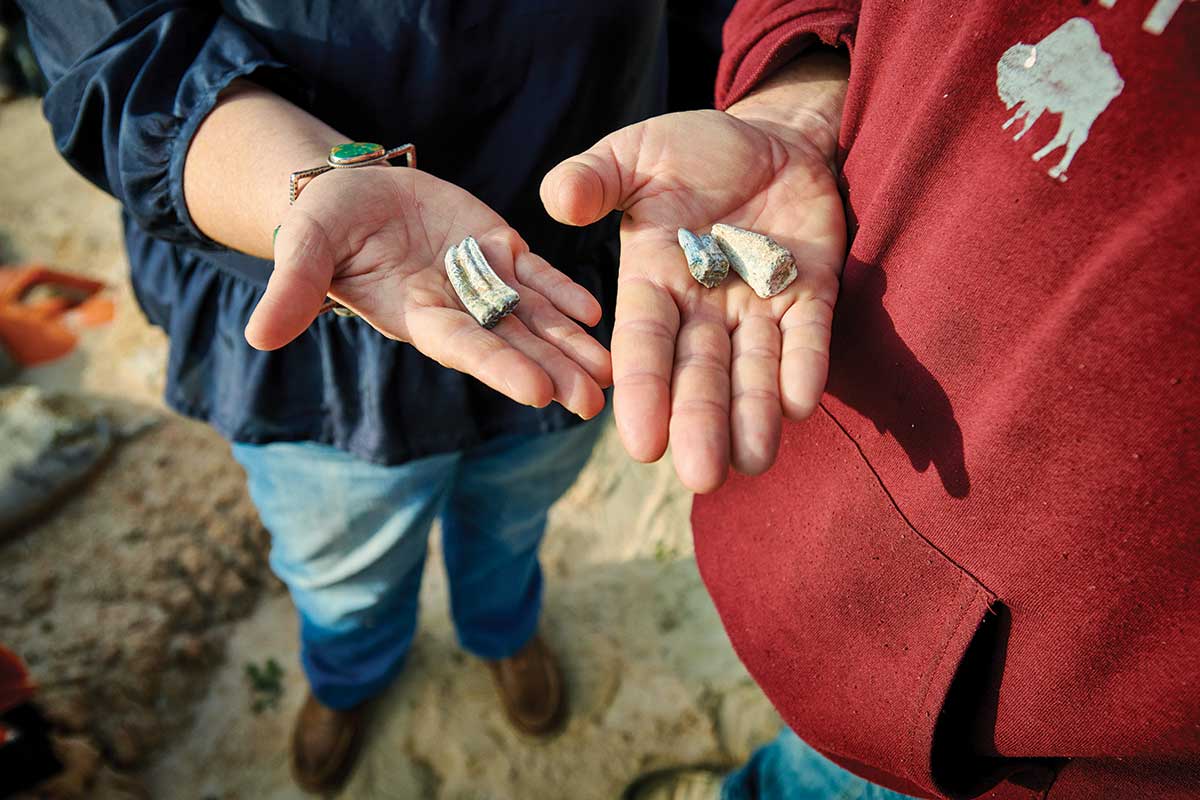
Joey and Laurie Roland show teeth from an extinct three-toed horse at their ranch.
Dave Shafer
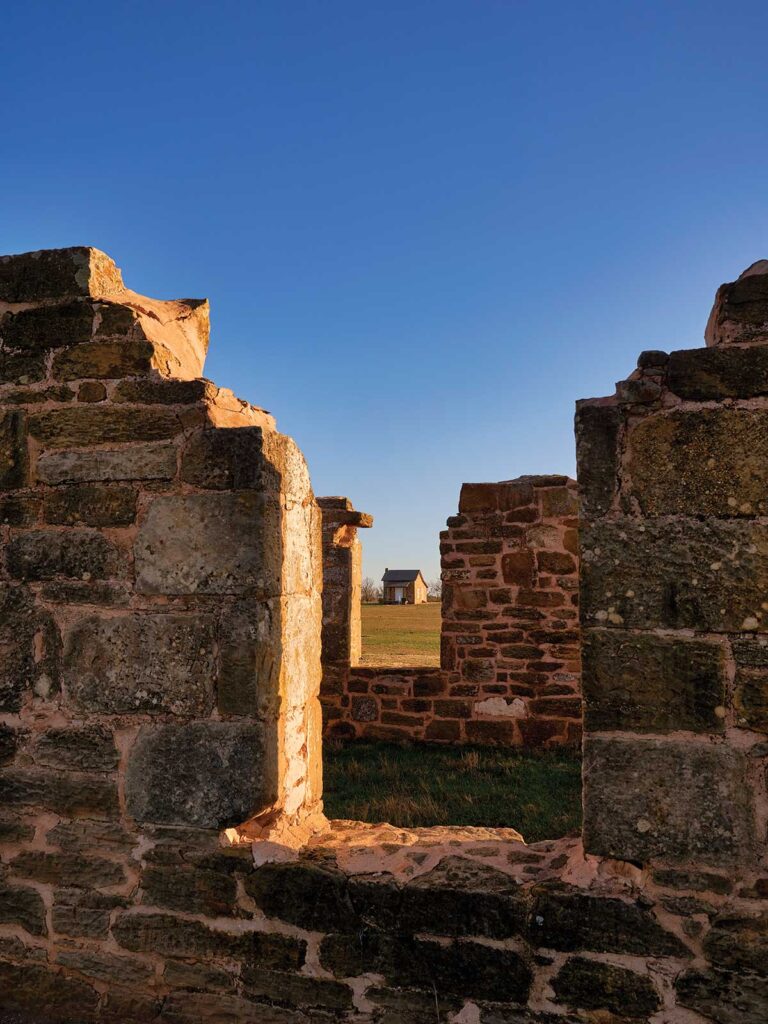
Looking through the walls of the ruins of the west barracks, across the parade grounds and to Fountain House.
Dave Shafer
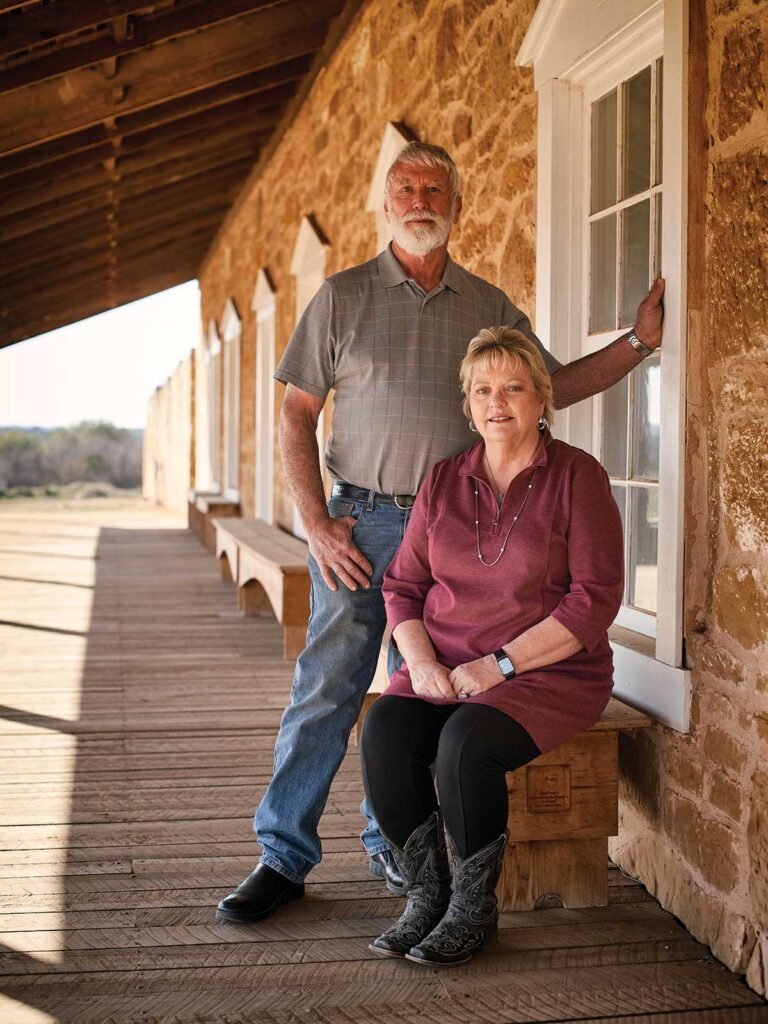
Garland and Lana Richards outside the restored east barracks at Fort Chadbourne.
Dave Shafer
“We found almost half a million artifacts below the floor of the double officers’ quarters—the dogtrot house where rancher Tom Odom and his wife raised 13 children,” Garland says. In 1877, the Odoms purchased the land from well-known pioneer Mary Maverick and turned the fort into a ranch headquarters.
“The archaeological picture of Fort Chadbourne is probably more complete than any other Texas military site,” Garland says, based on the number of artifacts recovered.
The 12,500-square-foot Fort Chadbourne Visitor Center opened in 2012 to give people a firsthand look at some of the military, ranching and Native American history of West Texas. Half of the center’s exhibits sit inside a spacious walk-in vault with displays of cavalry items uncovered during digs: buckles, spurs, buttons, helmet badges and metal powder flasks along with flattened bullets used as poker chips. A Native American exhibit contains 48 large knife and spear points found near the fort in a foot-square cache that dates back 6,000 years. There’s also a 450-piece antique gun collection and a replica stagecoach.
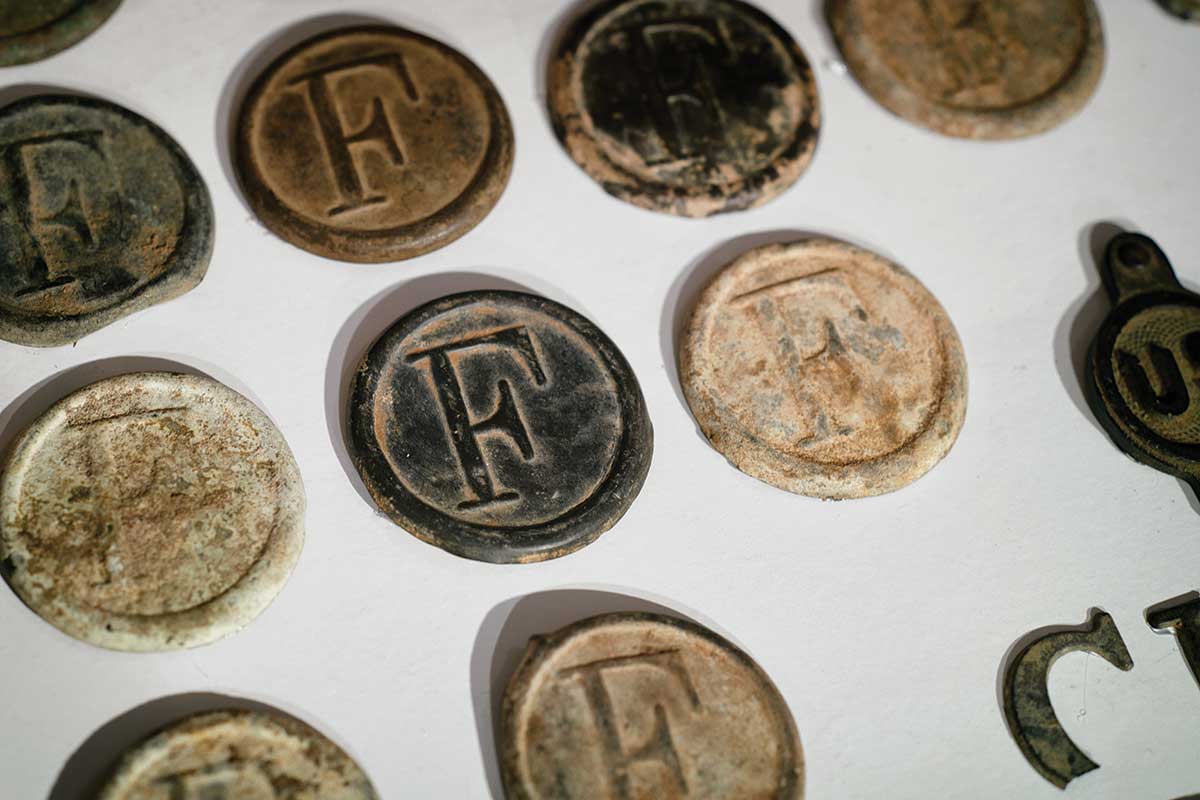
Rosettes that went on horses’ bridles denoting cavalry Company F.
Dave Shafer
A walk around the fort and into the buildings puts the center’s displays into perspective. Even in daylight, the quiet creates a haunting atmosphere. Inside the restored Fountain House, bullet holes in its thick, plastered walls shared space with graffiti from 1870 on. After circling the unrestored hospital and the restored barracks, I spotted a rusty, 4-inch sliver of metal on the ground. Garland explained it was a square-headed nail common until 1880 or so. “You’re in the Butterfield stage corral area,” he says. “It’s littered with artifacts.”
Each excavation answers some questions but raises others. Ground-penetrating radar has revealed a building that isn’t mapped.
If you discover archaeological treasures on your land, contact your local archaeological society, Lana recommends. “We did this correctly, thanks to Larry’s help,” she says.
Millions of Years Away
While exploring family property near Snyder, about 80 miles northwest of Bronte, Tina Roland came across large bones eroding out of a gully. Determined to find somebody who could identify the bones, Roland contacted Eileen Johnson, professor of museum science and a paleobiologist at Texas Tech University.
When Johnson went to Snyder in 2005 to see the discovery, she found herself looking at bones dating from 1.8 to 2.6 million years ago, a time known as the Early Pleistocene. The gully marked an ancient stream bed.
“We knew this was important and exciting. We’re still working 17 years later,” Johnson says. “There are a handful of Early Pleistocene sites in the country of this age, but none has this diversity of species or is so well preserved.”
Numerous wading birds, camels, rabbits, giant tortoises and ancestors of coyotes, mountain lions and prairie dogs lived here once. Fossils have revealed the first appearance of some animals and the last appearance of others. Microbiological material excavated with the bones gives clues about the ancient plant community and climate.
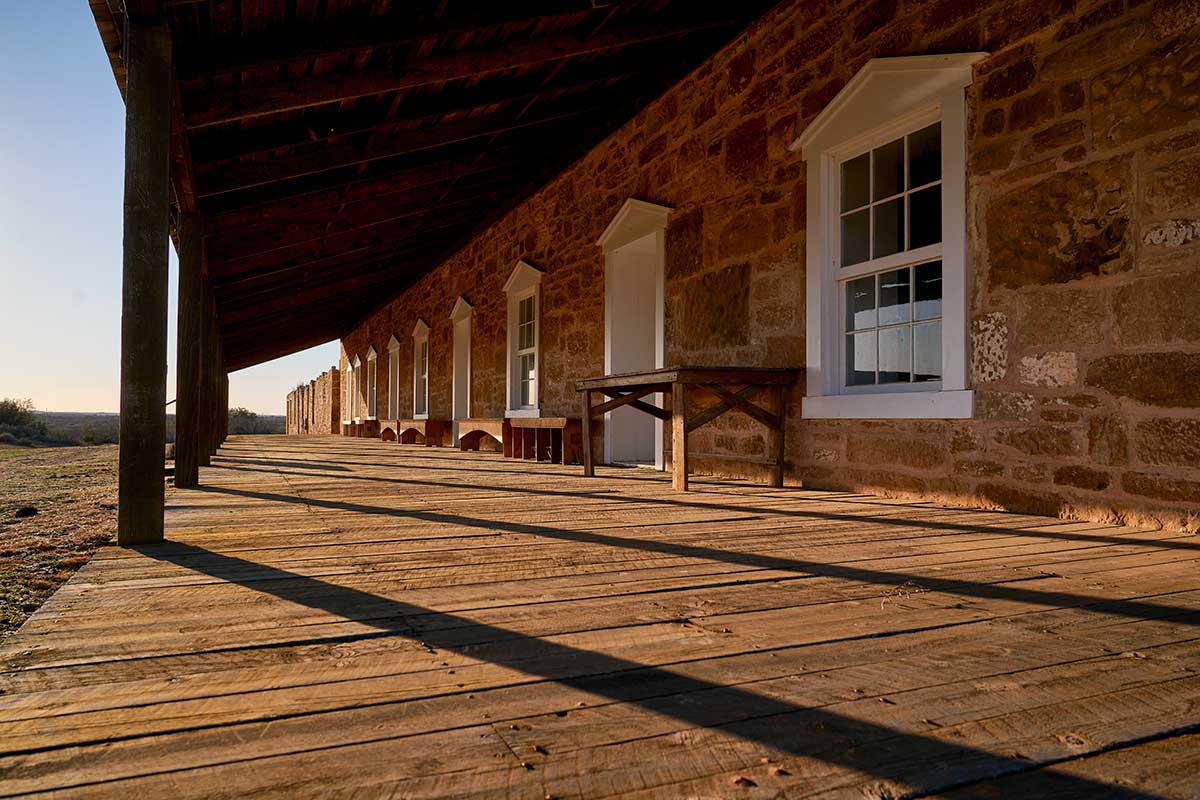
The fully restored east barracks.
Dave Shafer

Graduate student assistant Madison Westfall tends to specimens from the ranch that are filed at the Museum of Texas Tech University.
Dave Shafer
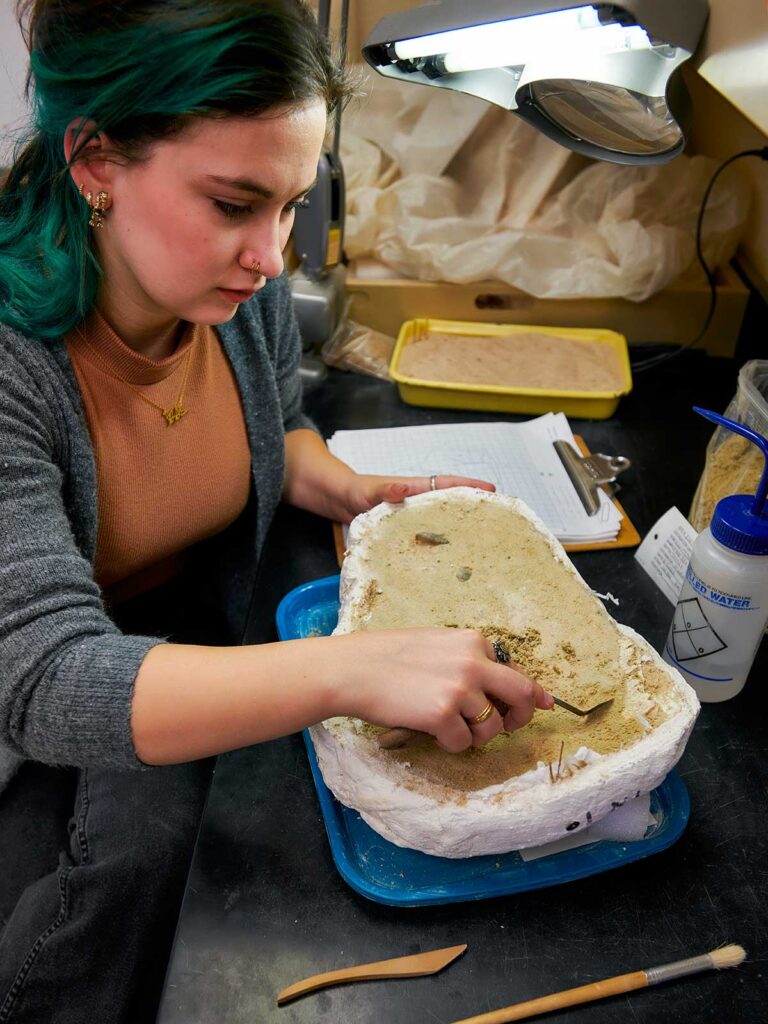
Westfall excavates a “jacket” known to contain tortoise, rabbit and equine artifacts recovered at Roland Springs Ranch.
Dave Shafer
The paleontological site is 15 feet deep and measures approximately 30 feet by 30 feet. For six weeks each summer, a small international crew trowels up dirt and washes the sediment through a fine mesh screen. Joey Roland, Tina’s son, and Joey’s wife, Laurie, host the field camp, providing small cabins next to their house and pool. “They are both very much involved,” Johnson says.
“I’m not a paleontologist, but they’ve taught us so much, mostly during talks around the pool after work,” says Joey, a member of Big Country Electric Cooperative. “A random bone is exciting, but it doesn’t tell a story. It’s out of context. For us, this is fascinating. I love it, and I’ve fought tooth and nail to protect it.”
With doggedness, he managed to get an oil pipeline diverted around the site. Unlike archaeological sites, no federal or state laws protect paleontological sites.
Laurie loves the picture that the finds suggest: huge Galapagos-like tortoises roaming the West Texas grasslands about 2 million years ago with tiny, three-toed horses grazing nearby. She is thrilled to sometimes find prehistoric bones on the surface after a rain.
“Humans have never seen or touched them,” she says. “How could you not know that’s special?”
The Rolands share their findings with their community, allowing the Scurry County Museum in Snyder to offer seasonal public tours at the site. The museum has a temporary exhibit of casts made of the finds. The Museum of Texas Tech’s Roland Springs Ranch materials are part of ongoing lab research and not currently viewable by the public.
“Joey and Laurie are the first and only landowners I know with the willingness to let people on their land,” Johnson says.
“It’s selfish not to let them come to the site,” Laurie says. “Texas is about hospitality.”
Texas has millions of years of buried history—giant mammoths, dinosaurs, oyster reefs, frontier trails. Does that make you wonder what could be in your backyard?
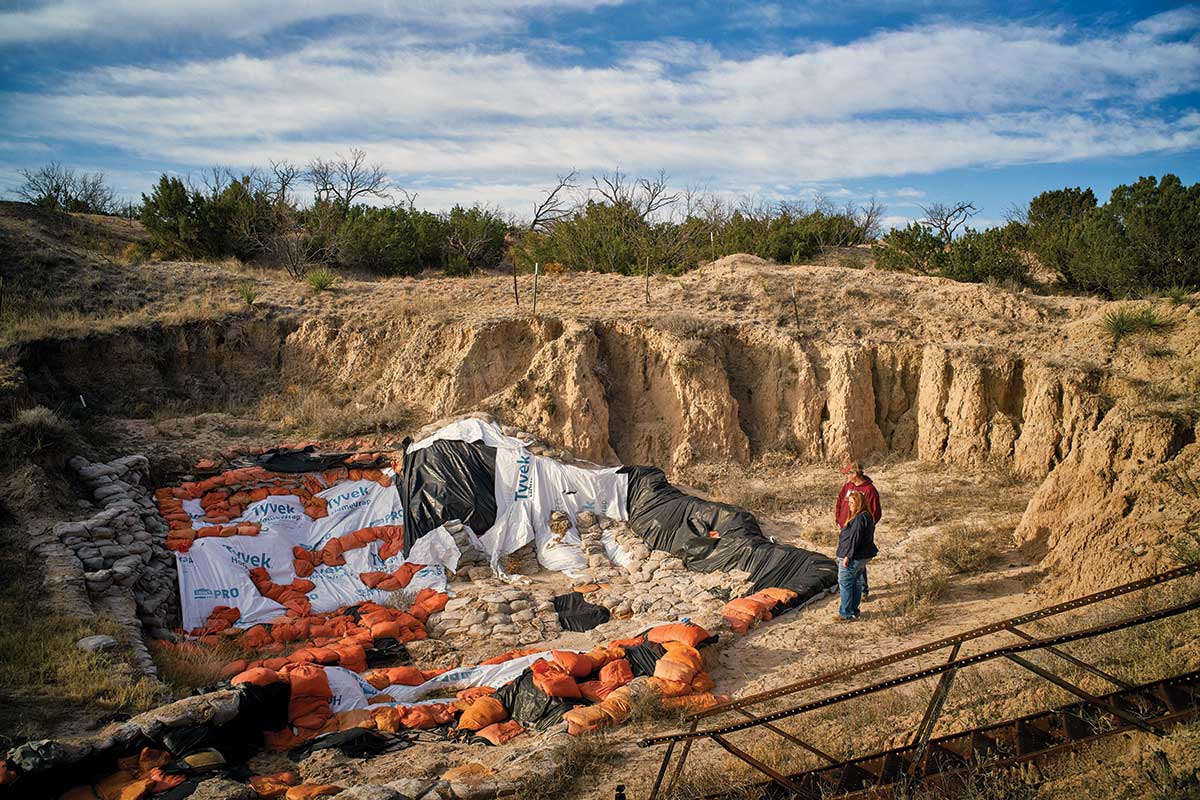
Laurie and Joey Roland inside the 15-foot-deep paleontological dig site at Roland Springs Ranch.
Dave Shafer
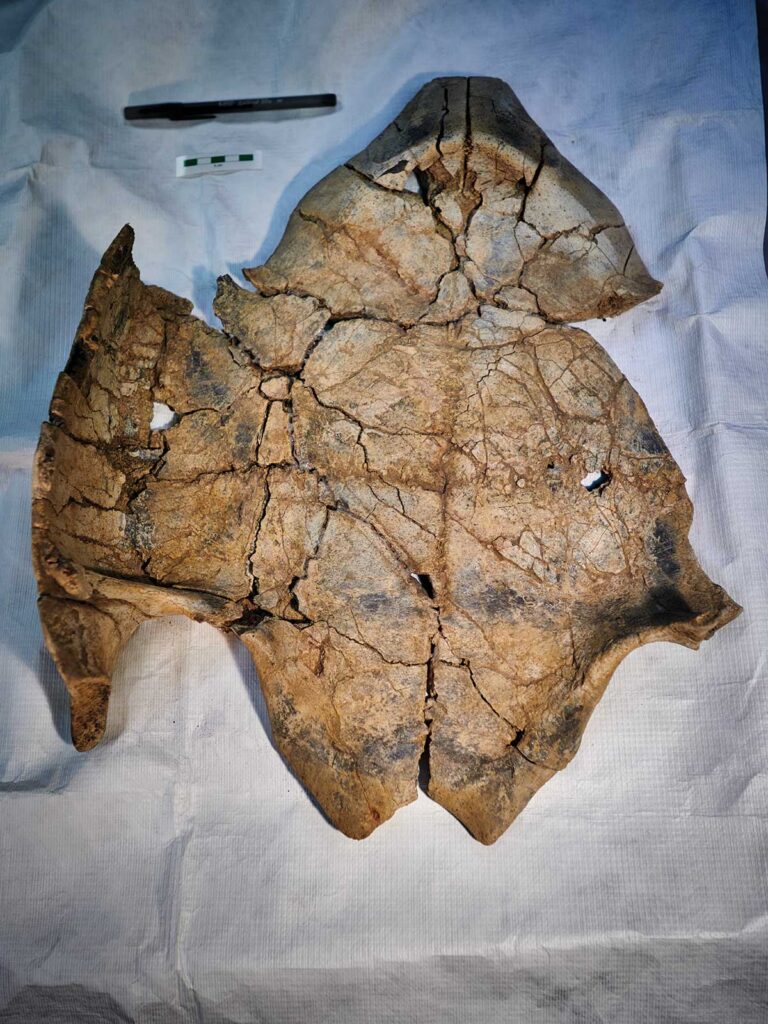
An ancient tortoiseshell recovered from the ranch.
Dave Shafer
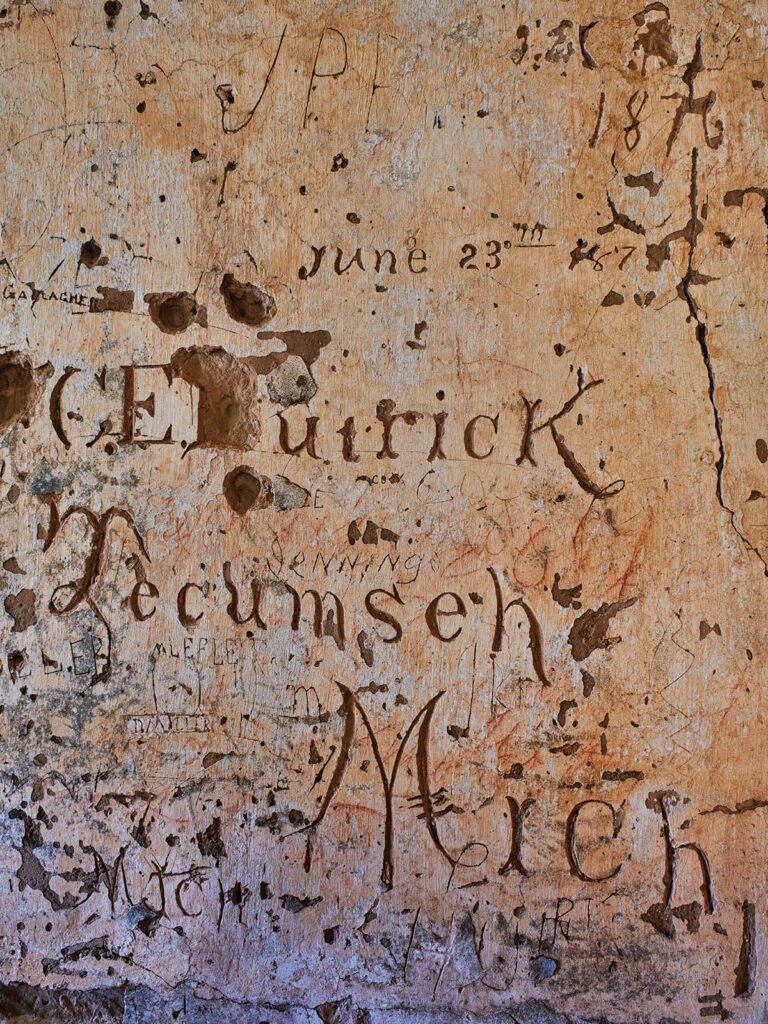
Graffiti on the plastered walls of Fountain House at Fort Chadbourne dates to 1870.
Dave Shafer
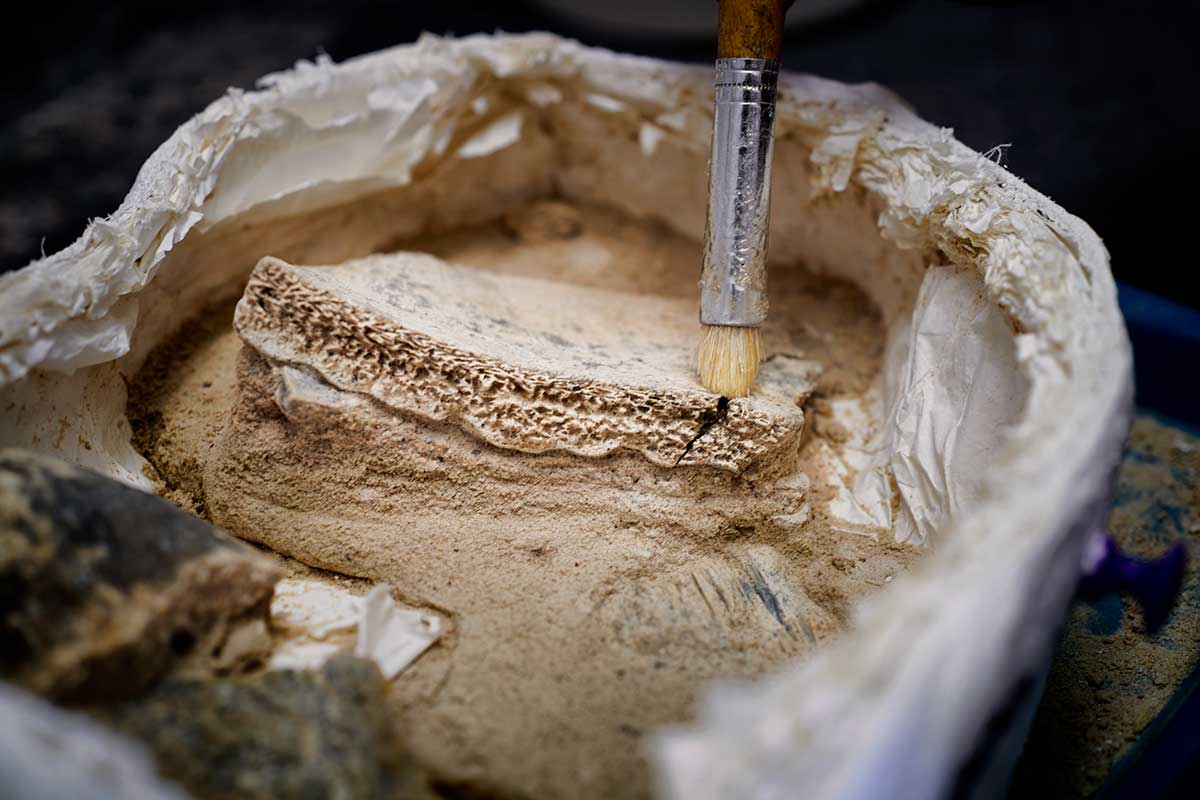
Westfall brushes on a solution to stabilize a tortoiseshell.
Dave Shafer
